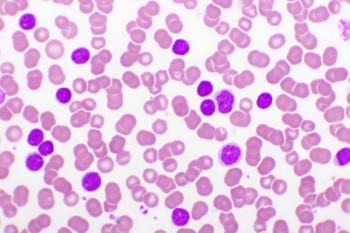
Study Highlights Association of COPD and CVDs, Need for Prevention and Management
Among adults 40 years and older with chronic obstructive pulmonary disease (COPD), there is a higher prevalence of cardiovascular diseases (CVDs) compared with a general population without COPD.
Cardiovascular disease (CVD) prevention and management is important in patients with chronic obstructive pulmonary disease (COPD) because these patients have a higher prevalence of CVD, according to a study
COPD is a major cause of morbidity and mortality worldwide and it is the third-leading cause of death globally. Furthermore, CVD is a known common comorbidity in patients with COPD.
“COPD and CVD commonly coexist and interact with each other. The presence and worsening of CVD are one of the triggering factors for exacerbations of COPD, while exacerbations of COPD can trigger malignant cardiovascular events, even resulting in cardiovascular death,” the authors explained. They also wrote that “it is unclear whether there is a higher prevalence of one or more CVDs in COPD patients compared to those without COPD, and the magnitude of this increased prevalence.”
In a
“There is this concept of systemic inflammation, and that systemic inflammation affects the lungs and also affects the cardiovascular and the endovascular systems and produces the formation of plaques that eventually induce a cardiac event,” he explained.
In the BMC Pulmonary Medicine study, the researchers conducted a population-based cross-sectional study using the National Health and Nutrition Examination Survey (NHANES) 2013-2018. A total of 11,425 participants 40 years and older were included. Of these, 661 had COPD and 10,764 did not have COPD.
There were significant differences at baseline in demographics, lifestyle, inflammation indicators, and comorbidities between the COPD and non-COPD groups. Patients with COPD were older (mean [SD], 64.3 [10.2] years vs 58.1 [11.7] years), more likely to be never smokers (53.6% vs 33.8%), more likely to be non-Hispanic White (80.5% vs 68.0%), and more likely to have an annual family income below $35,000 (58.3% vs 28.0%).
The prevalence of having 1 or more CVDs were:
- 59.6% for 1 CVD and COPD vs 28.4% no COPD
- 32.8% for 2 or more CVDs vs 8.3% no COPD
- 19.4% for 3 or more CVDs vs 3.5% no COPD
The most common CVD for both the COPD and non-COPD group was diabetes (29.6% and 15.05%, respectively), followed by coronary heart disease (23.7%) and heart attack (21.9%) for the COPD group and heart attack (4.3%) and stroke (3.9%) for the non-COPD group.
“In the unadjusted models, COPD was significantly associated with a higher prevalence of all 6 specific CVDs, but after adjusting for confounding factors, COPD was not significantly associated with stroke and angina pectoris,” the authors noted.
The use of the NHANES 2013-2018 database was a major advantage of the study because of the large, nationally representative sample size. However, the study results only demonstrate the existence of the association between COPD and CVD, and it cannot determine a causal relationship. The NHANES database also did not include information on the severity of COPD, which could help identify any associations between severity of disease and CVDs.
In addition, despite the large sample size, the large number of non-Hispanic White and non-Hispanic Black individuals limits the generalizability of the findings to other populations.
“To our knowledge, our study revealed, for the first time, a gradual increase in the prevalence of concomitant more CVDs in COPD patients as compared to individuals without COPD,” the authors wrote. “Our findings provided important insights into the management of COPD and CVD and therefore had important implications for clinical practice.”
Reference
Chen H, Luo X, Du Y, et al. Association between chronic obstructive pulmonary disease and cardiovascular disease in adults aged 40 years and above: data from NHANES 2013-2018. BMC Pulm Med. 2023;23(1):318. doi:10.1186/s12890-023-02606-1
Newsletter
Stay ahead of policy, cost, and value—subscribe to AJMC for expert insights at the intersection of clinical care and health economics.









































